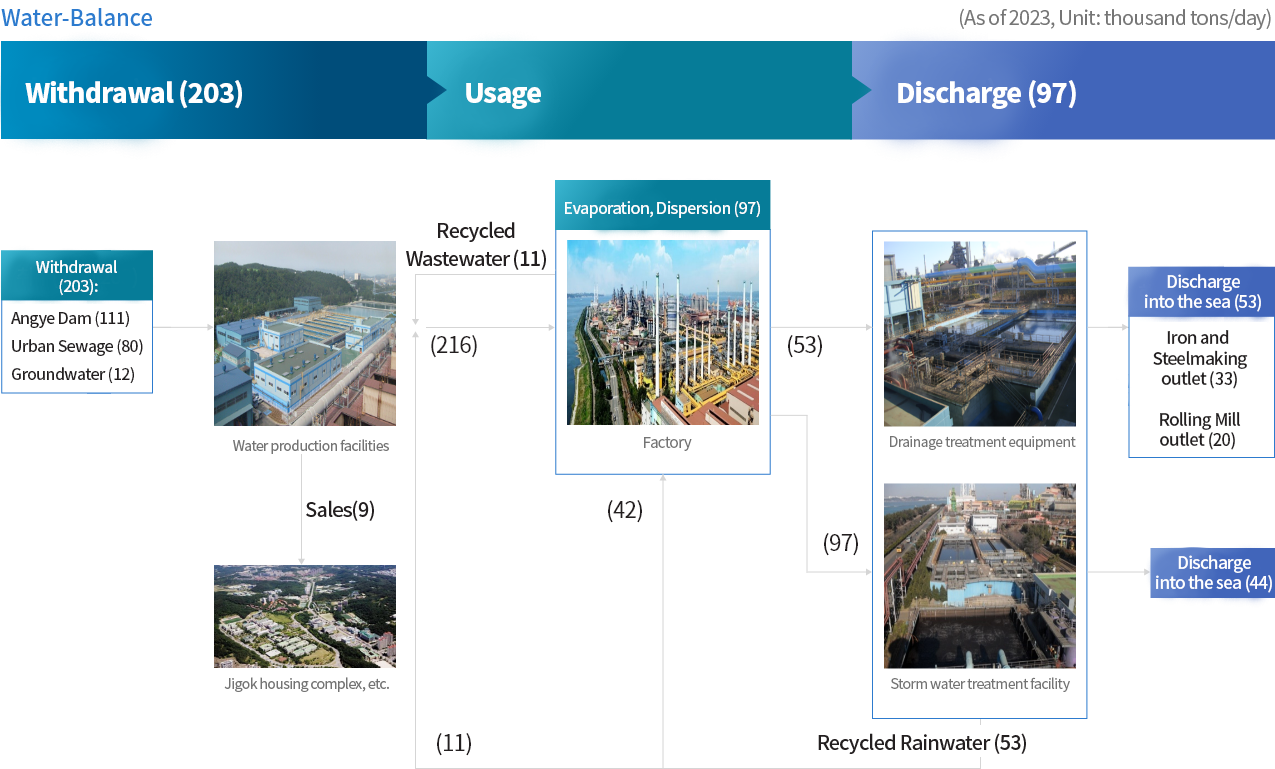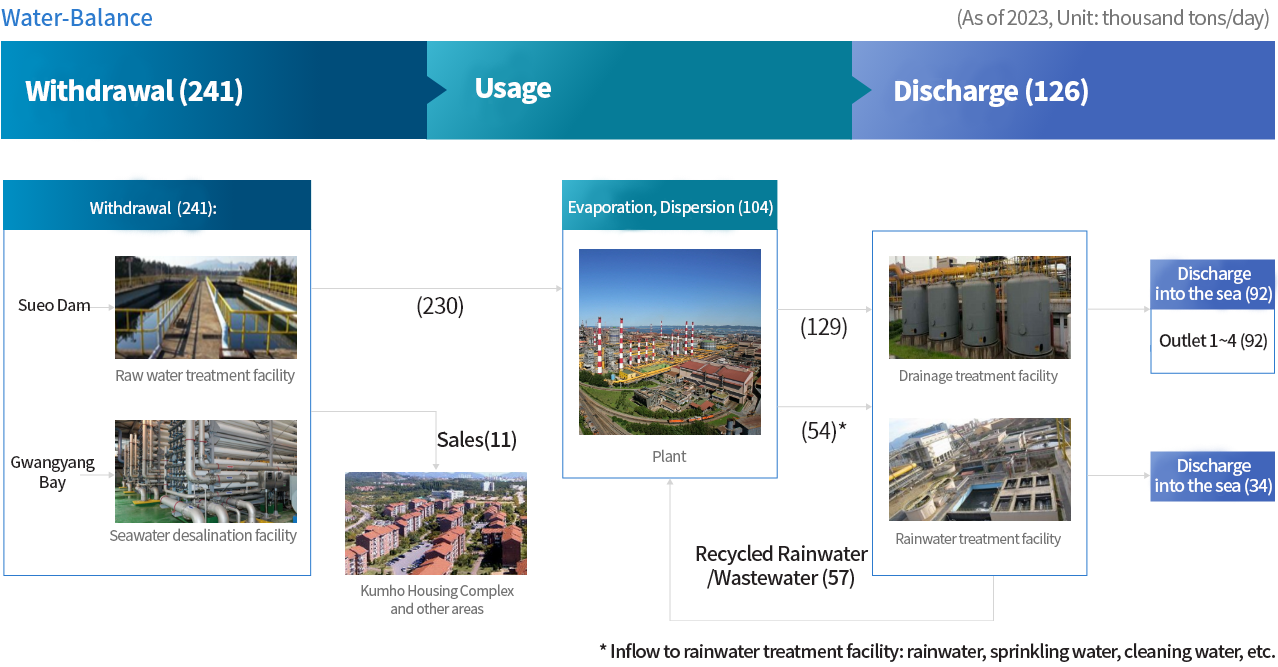Water
Pohang Steelworks Water Usage Process

Gwangyang Steelworks Water Usage Process

Drought Response Measures
To mitigate the risk of water resource shortages, we have established a cooperative framework with national water resource management government agencies (Ministry of Environment, Korea Water Resources Corporation, local governments, etc.). We monitor the water retention rate of dams that serve as water sources for our worksites and develop water management scenarios based on water retention rates (e.g., Pohang Steelworks Water Source Dam: critical stage below the 28% water retention rate, supply restriction stage below the 12.5% water retention rate). This allows us to manage water resources effectively in times of drought.
In the Water Stress High area of Gwangyang Steelworks, POSCO maintains ongoing communication with Jeollanam-do and collaborates closely with the government by signing a business agreement aimed at
overcoming drought, organized by the Yeongsan River Basin Environmental Office. To address different stages of water shortages, POSCO implements measures such as utilizing municipal wastewater
treatment water, operating seawater desalination facilities, and recycling steelworks wastewater to secure alternative water resources. During critical water shortage stages, POSCO adjusts the plant’s operation rate to effectively manage the situation.
POSCO is committed to continuous water resource management and recycling efforts to contribute to regional water shortage solutions and minimize the impact on steelworks operationsPOSCO is committed to continuous water resource management and recycling efforts to contribute to regional water shortage solutions and minimize the impact on steelworks operations.
Reprocessing of Urban Sewage
To decrease the amount of surface water and groundwater drawn from our withdrawal sources, we are pursuing activities to secure alternative water resources. Since 2015, Pohang Steelworks has been an end user in a project to reuse treated water from Pohang City’s sewage treatment facilities. This project provides a stable supply of approximately 80,000 tons of recycled water daily, which we utilize as industrial water.
Seawater Desalination
In response to the worsening water shortage due to a prolonged drought in the Jeollanam-do region, Gwangyang Steelworks has been requested by the Yeongsan River Basin Environmental Office and local communities to reduce water usage. To address this, Gwangyang Steelworks operates a seawater desalination facility with a capacity of 30,000 tons per day, serving as an alternative to existing water sources. This facility minimizes energy consumption by utilizing warm water discharge and employs an Energy Recovery Device (ERD) to optimize energy efficiency.
Water Recycling
Integrated steelworks inherently require significant water usage. However, to maximize water recycling, we collect and treat reusable water, such as cooling water, rainwater, and water used for yard and road spraying, through our rainwater treatment facilities. These efforts allowed the company to recycle about 26% of its total water withdrawal in 2023, helping to mitigate water shortage risks in the local community.
Water withdrawn by the steelworks undergoes purification at the raw water treatment facility, where it is divided into freshwater and purified water for use in necessary processes. The used water in each plant is categorized as wastewater, sewage, or cooling water, and is collected through separate drainage systems. Depending on the characteristics of the wastewater, it undergoes primary physical and chemical treatment, followed by secondary biological treatment for wastewater containing organic substances. The final treatment occurs at the final wastewater treatment facility before discharge into external marine areas. In an effort to reduce the environmental impact on the coastal areas near our facilities, we have established stringent internal management standards for the discharge concentration of key pollutants in the final discharge water, maintaining Suspended Solids (SS), Total Organic Carbon (TOC), and Total Nitrogen (T-N) levels at 80% of the legal limits. At both the Pohang Steelworks (2 outlets) and Gwangyang Steelworks (4 outlets), we manage and monitor the water quality of the final discharge outlets continuously, 24 hours a day, through real-time monitoring systems to ensure minimal environmental impact
Wastewater Treatment System

